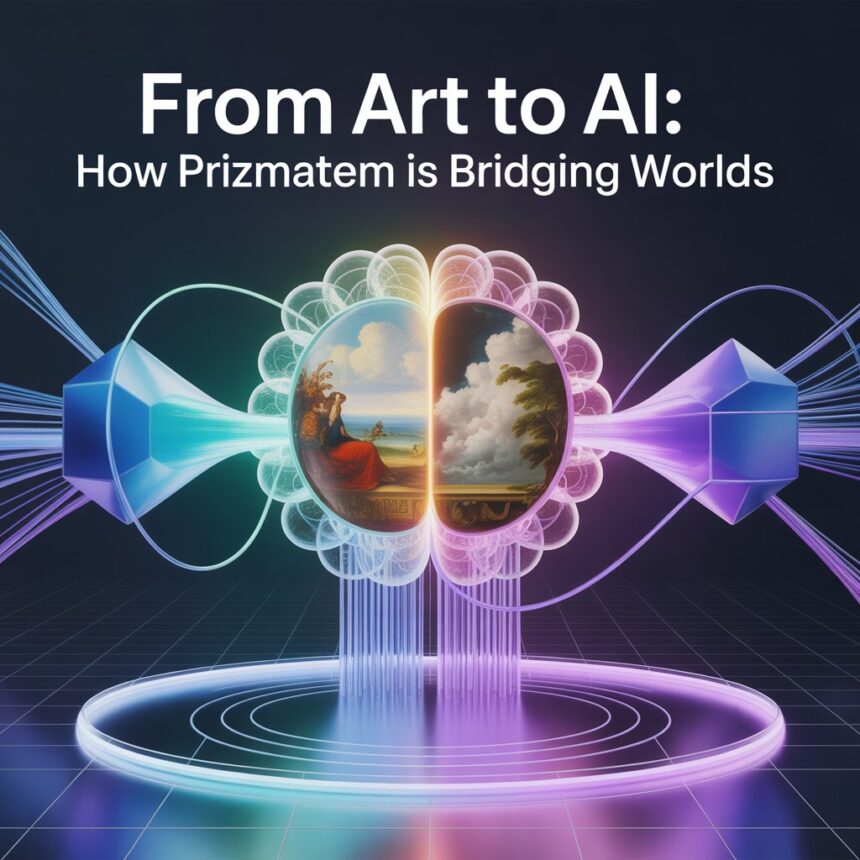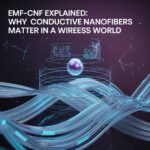In an age defined by both aesthetic innovation and computational power, few things feel more exciting than the convergence of art and artificial intelligence. As we stand at the crossroads between human creativity and algorithmic intelligence, platforms and technologies are emerging that act as bridges between these realms. One such name gaining recognition for navigating this hybrid terrain is Prizmatem — a concept, framework, and creative ecosystem that aims to fuse artistry with AI-driven tools. But what exactly is Prizmatem? And how is it helping to unite human expression and machine intelligence?
In this article, we’ll explore:
-
What Prizmatem is (or can be, depending on your interpretation)
-
The philosophical and technical foundations behind it
-
Use cases in art, design, education, and beyond
-
The role of AI within the Prizmatem ecosystem
-
Challenges, ethical considerations, and future directions
Let’s dive into how Prizmatem is positioning itself at the frontier of art + AI.
1. Understanding Prizmatem: Concept, Metaphor, & Platform
The name and metaphor
The word Prizmatem evokes “prism” + “system/template/framework” — a prism that refracts light into all its spectral hues, and a system that organizes, channels, or designs. In many descriptions, Prizmatem is presented as a “digital prism for ideas,” turning raw data, concepts, or creative impulses into structured, interactive, visually rich output. The Monk Life+2espressocoder+2
In other sources, Prizmatem is framed as a creative framework or ecosystem bridging the gap between artistic expression, technology, and human insight. espressocoder It emphasizes multidisciplinarity — welcoming designers, coders, educators, storytellers, technologists — all working across the prism of creativity.
The more technical “material / optical” angle
Interestingly, one source presents Prizmatem not just as a software or conceptual tool, but as a next-gen composite material with optical properties. According to that view, Prizmatem is composed of silica micro-prisms embedded in a polymer matrix, enabling light control, refraction, transparency, and even data encoding via structured light patterns. boursemagazine.com In that version, Prizmatem could find use in smart windows, architectural installations, advanced displays, or wearable optics.
This dual nature — partly conceptual, partly material/optical — gives Prizmatem a rich ambiguity. It can be thought of as both a framework for creative expression and a medium / substrate in which light and information interplay.
The creative-technology platform view
Another common framing is that Prizmatem is a digital platform combining design, generative tools, visualization engines, AR/VR, and AI support. It supports prototyping, collaboration, content generation, and immersive experiences. espressocoder+2nextuk.co.uk+2 It aspires to allow creators to build multidimensional work — not just static visuals, but interactive, evolving experiences.
Under this view, Prizmatem becomes a bridge: it connects the sensibilities of artists (composition, aesthetics, storytelling) with the power of computational tools (data processing, procedural generation, machine intelligence).
2. Philosophical & Technical Foundations
If Prizmatem is to truly bridge art and AI, it needs roots both in creative philosophy and in computational scaffolding. Let’s unpack those foundations.
The prism metaphor as philosophy
A prism refracts, breaks, and reveals hidden spectra. In the context of creative thinking, it suggests that a single idea can be refracted into many perspectives, and that complexity can be revealed rather than hidden. Prizmatem encourages creators to see multiple “colors” in an idea, to let media, style, interactivity, and depth emerge — not just flat representations.
This philosophy also supports plurality: not one style, not one medium, but many coexisting and interacting.
Hybrid human + machine workflows
At the heart of bridging art and AI is creating workflows where human intentions and machine support coexist. In the Prizmatem vision:
-
AI assists rather than replaces. For example, content generation, style suggestions, or lighting optimization can be machine-driven, but the human retains curatorial control.
-
The platform or framework must allow iterative back-and-forth: human sketches → AI refinement → human edits → finalization.
-
Transparency is key. Creators should see how AI interventions affect their work (parameters, layers, weightings), to maintain agency.
Technical architecture and enabling technologies
To support such synergy, several technical components are essential:
-
Visualization engine / rendering core: capable of real-time 3D rendering, light-field rendering, AR/VR layers, shader effects, etc. Prizmatem’s “multi-layered visualization engine” is cited in some descriptions.
-
AI & generative models: Tools like text-to-image, style transfer, procedural geometry, generative texture synthesis, etc. These become co-pilots for creative work.
-
Cloud & collaboration infrastructure: So multiple creators can work together, sync versions, comment, and merge work.
-
APIs / SDKs / plugin systems: To integrate with external tools (e.g. Unity, Blender, WebXR, Figma) so creators can bring in, export, or embed work.
-
Adaptive / responsive systems: For projects or outputs that change based on environment (light, user interaction) — especially if one adopts the “optical material” angle of Prizmatem.
3. Use Cases: Where Prizmatem Bridges Worlds
Let’s step from theory to practice. Here are ways Prizmatem — in its various interpretations — can, does, or might operate in real creative, educational, architectural, or technological contexts.
3.1 Digital & Generative Art
-
Light-driven installations & interactive art: If Prizmatem involves optical materials, artists could build installations whose appearance shifts as ambient light changes, or whose visual layers are revealed with projection or scanning devices.
-
Hybrid AR/VR artworks: Creators might build visual experiences that respond to user motion, combining 3D forms, procedural animations, and dynamic textures — all authored within the Prizmatem platform.
-
Style blending and interpolation: Artists could feed in multiple styles and let AI-assisted interpolation produce novel hybrid aesthetics, which they refine.
3.2 Design, Branding & Product Visualization
-
Interactive brand stories: Rather than static logos, companies might build narrative experiences — users explore brand elements like rooms, stories, or mini-interactions built via Prizmatem.
-
Product mockups with environmental interaction: A designer could embed Prizmatem materials/rendering in product visualizations that respond to lighting, angle, or user movement.
-
Spatial design & XR previews: Interior architects or retail planners could preview how lighting and materials interact in AR/VR using Prizmatem-enhanced scenes.
3.3 Education, Training & Visualization
-
Experiential learning modules: Teachers can create AR-enhanced lessons or VR labs — for example, a chemistry module where students visually “see” how molecules absorb/reflect light, leveraging the prism metaphor.
-
Data visualization with artistic flourish: Rather than bland charts, educators or analysts could present data through immersive visual narratives (3D, interactive) built via Prizmatem.
-
Creative thinking workshops: Use Prizmatem’s “prism” metaphor to help students reframe ideas — see one concept in multiple hues, recombine, remix.
3.4 Architecture, Interiors & Smart Materials
If we take seriously the optical-material view of Prizmatem:
-
Smart windows and facades: Transparent panels that change hue, refract light differently, or diffuse glare dynamically — combining utility with aesthetics.
-
Interior lighting surfaces: Using Prizmatem composites to enable walls, ceilings, or partitions that act as light modulators — enabling mood shifts, subtle transitions, or soft ambient effects.
-
Wearable optics / fashion-technology: Garments or accessories that shift their visual appearance under different light conditions, harnessing Prizmatem materials.
These use cases show how Prizmatem — whether as platform, material, or mindset — can materially bridge the worlds of art and AI/technology.
4. The Role of AI in Prizmatem
AI is not just an add-on in this vision — it’s an essential collaborator. Here’s how AI contributes within the Prizmatem ecosystem.
4.1 Generative content & augmentation
-
Generative models (e.g. diffusion, GANs) can propose textures, forms, color palettes, or even entire scenes from prompts or sketches, which creators refine.
-
Style transfer & blending: Artists might merge the brushstrokes of one style with the geometry of another, use AI to suggest intermediate blends, then select or adjust.
-
Adaptive lighting & rendering adjustments: AI can help dynamically adjust lighting, shading, global illumination, or responses to ambient conditions.
4.2 Suggestive / assistive tools
-
Smart suggestions: While designing, AI might suggest alternate compositions, color harmonies, or adjustments to contrast.
-
Auto-layout or parameterization: For parametric designs, AI can optimize parameters (e.g. prism orientation, light diffuser strength) based on user goals (e.g. clarity, brightness, visual balance).
-
Error detection / critique: AI can flag visual inconsistencies, propose better alignments, or evaluate perceptual issues like contrast, legibility, or visual hierarchy.
4.3 Data-driven adaptation
-
User feedback loops: AI can observe how users interact with a Prizmatem-based piece (which parts attract attention, where users spend time) and suggest adaptations.
-
Environmental adaptation: In the optical-material version, AI could adjust rendering or internal parameters based on ambient light, weather, or even user preferences.
-
Personalization: Based on usage history, preferences, or behavior, AI might tailor which parts of a Prizmatem installation are emphasized, shifted, or hidden.
4.4 Collaboration & democratization
One of the promising aspects is lowering barriers. Through AI assistance, non-experts (e.g. aspiring artists without deep technical skills) can work alongside experts to create compelling visual output. The gap between purely human creativity and fully automated content shrinks — Prizmatem becomes a shared playground.
5. Challenges, Risks, and Ethical Considerations
No bridge is without its gaps. Blending art and AI, especially in novel platforms like Prizmatem, involves complexity, responsibility, and thoughtful design. Here are some of the challenges:
5.1 Loss of authorship / control
As AI assists more, there’s a risk that the human’s vision gets diluted, or that creators feel they’ve ceded too much control. Establishing transparency (letting users see and adjust AI suggestions) is essential.
5.2 Bias and aesthetics
AI models often carry biases (style, cultural, visual norms). If unchecked, they may push creators toward homogeneous aesthetics or replicate visual tropes rather than fresh, diverse expressions.
5.3 Technical complexity & performance
Real-time rendering, dynamic adaptation, and hybrid AR/VR experiences demand significant computational resources. Ensuring smooth performance, device compatibility, and scalability is non-trivial.
5.4 Ethical / privacy concerns
If Prizmatem modules collect user interaction data to adapt or learn from, privacy and transparency become critical. Also, the blending of virtual/hybrid art raises questions like: how to represent authorship, ownership, or integrity of works that morph over time?
5.5 Material vs. software ambiguity
If Prizmatem is partly a physical / optical material, bridging physical production constraints (durability, manufacturing, cost) with artistic flexibility becomes a challenge. The dual identity must be managed carefully.
6. Vision & Future Directions
To close, let’s consider where Prizmatem might head, and how its bridging mission might evolve.
6.1 Community-driven growth & open frameworks
Prizmatem’s success depends on open collaboration. A thriving community of creators — sharing modules, scripts, prisms, styles — can help the platform evolve beyond its creators’ original vision.
6.2 Cross-domain integrations
We might see Prizmatem modules integrated into broader systems: gaming engines, interactive storytelling platforms, social media, AR/VR marketplaces, architectural design suites, and more.
6.3 Physical-digital hybrids
The most intriguing possibility is hybrid works: installations that physically embody Prizmatem materials and digitally respond to interaction or ambient conditions. Imagine a gallery where walls themselves shift color or beam patterns as visitors move.
6.4 Education, research & collaboration
Prizmatem could become a tool in design schools, art-tech labs, or research projects exploring human-computer creativity. As more practitioners adopt it, new techniques and aesthetics will emerge.
6.5 Applications in wellness, environment & cities
Beyond art, Prizmatem-like systems could inform adaptive lighting in buildings, responsive public installations, or environmental displays (e.g. light sculptures that respond to pollution, weather, or energy flows).
7. Sample Narrative: A Prizmatem Project in Action
To illustrate how this works in practice, imagine the following scenario:
Project name: Luminous Path
Concept: A public walkway lined with Prizmatem panels that subtly shift color, brightness, and texture based on foot traffic, time of day, and environmental data (e.g. air quality, humidity).
Workflow:
-
Ideation & sketching
Artists sketch how the pathway should feel — moods, transitions, visual themes. -
Prototype in Prizmatem
Use the platform to build a simplified model: panels, light interactions, sensors. -
AI-assisted refinement
The AI module suggests light fade curves, color palettes consistent with mood themes, or gradient transitions. -
Simulation & testing
In AR/VR simulation, the team walks the path virtually at different times, sees how light responds, adjusts parameters. -
Installation & live adaptation
In real life, sensors feed data into the system. The AI adjusts panel outputs in real time. Over time, community feedback flows back, and the system evolves (e.g. shifting toward warmer hues in the evening, cooler ones midday). -
Community interaction & variant modes
During special events, the pathway might morph into interactive modes — light pulses responding to footsteps, patterns reacting to music, or community art overlays.
This kind of project encapsulates the bridging power: artful design + AI adaptation + real-world physical presence.
8. Tips for Getting Started with Prizmatem (or Similar Workflows)
If you’re a creator, designer, or technologist interested in exploring this space, here are some practical tips:
-
Start with the prism metaphor: take a single idea and challenge yourself to break it into multiple “colors” or perspectives.
-
Experiment with AI-assisted sketching tools (e.g. text-to-image, diffusion) to generate variants, then pick and refine favorites.
-
Use modular and iterative workflows: build small prototypes first before scaling.
-
Focus on interaction and adaptation: think about how your work responds to inputs (user, environment).
-
Learn about optical design & light physics (if you plan physical or hybrid works) — even a basic understanding of refraction, dispersion, and material properties goes a long way.
-
Build or join a creative/tech community — collaborators often bring the missing skills (e.g. coders, hardware specialists, curators).
-
Document the process and implications — how AI helped, what decisions you made, what trade-offs you encountered — this reflection is part of the art.
Conclusion
From art to AI, the space in between is where new possibilities live. Prizmatem — whether as concept, platform, or optical medium — presents a compelling vision of how those possibilities can be realized: a bridge where human expression and algorithmic power converge, refract, and reframing one another.
As technology advances and creators push boundaries, the lines between artist, coder, material scientist, and storyteller will blur. Platforms like Prizmatem aim to smooth that transition, offering tools and metaphors that help us not lose our human voice even as we amplify it with machines.
The journey may not be easy. Control, bias, performance, ethics — they all demand care. But the promise is bold: a future where art doesn’t just ride on tech but merges with it, where AI becomes a co-creator, and where the prism of human imagination becomes brighter, deeper, and more expressive than ever before.







